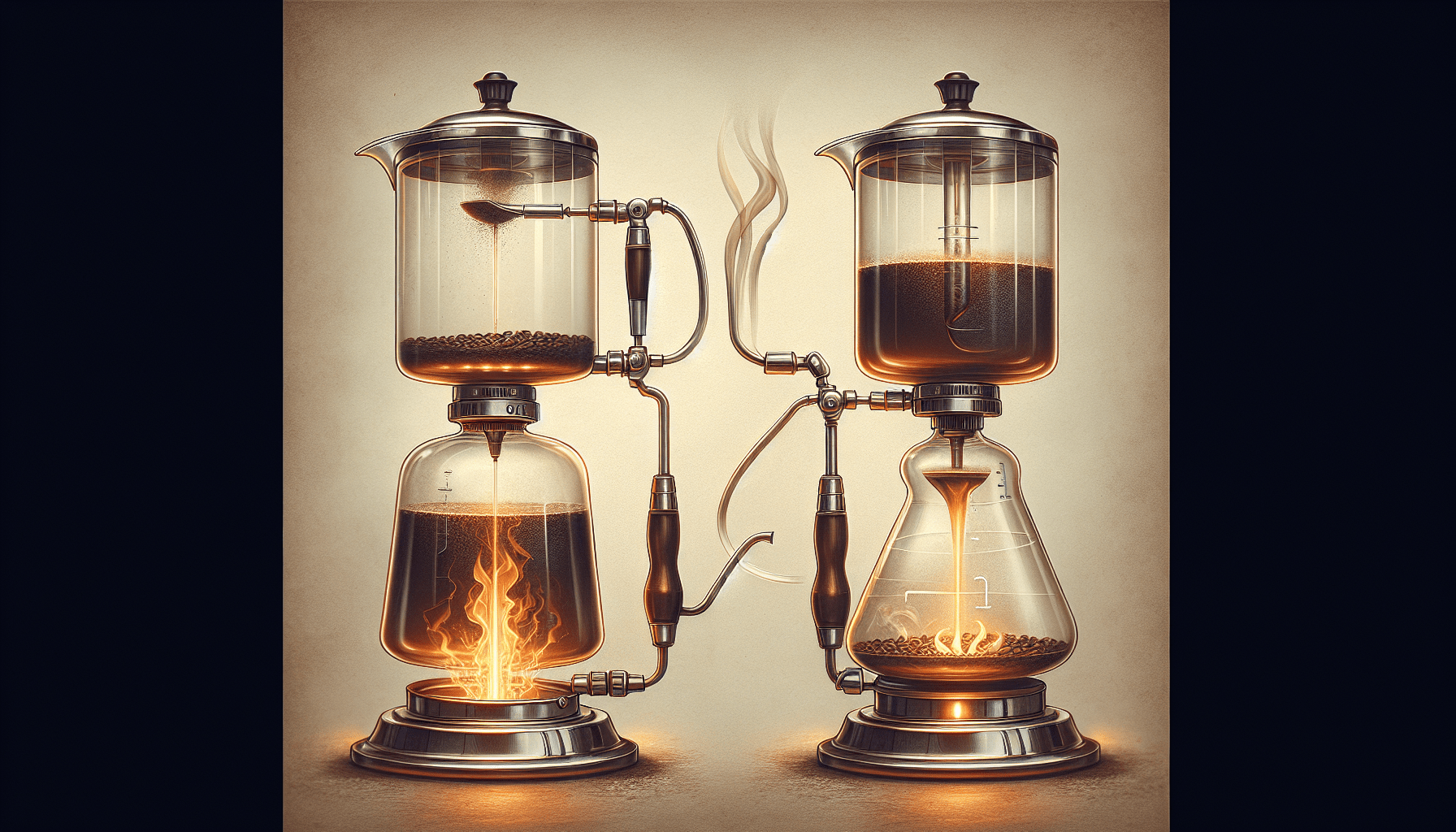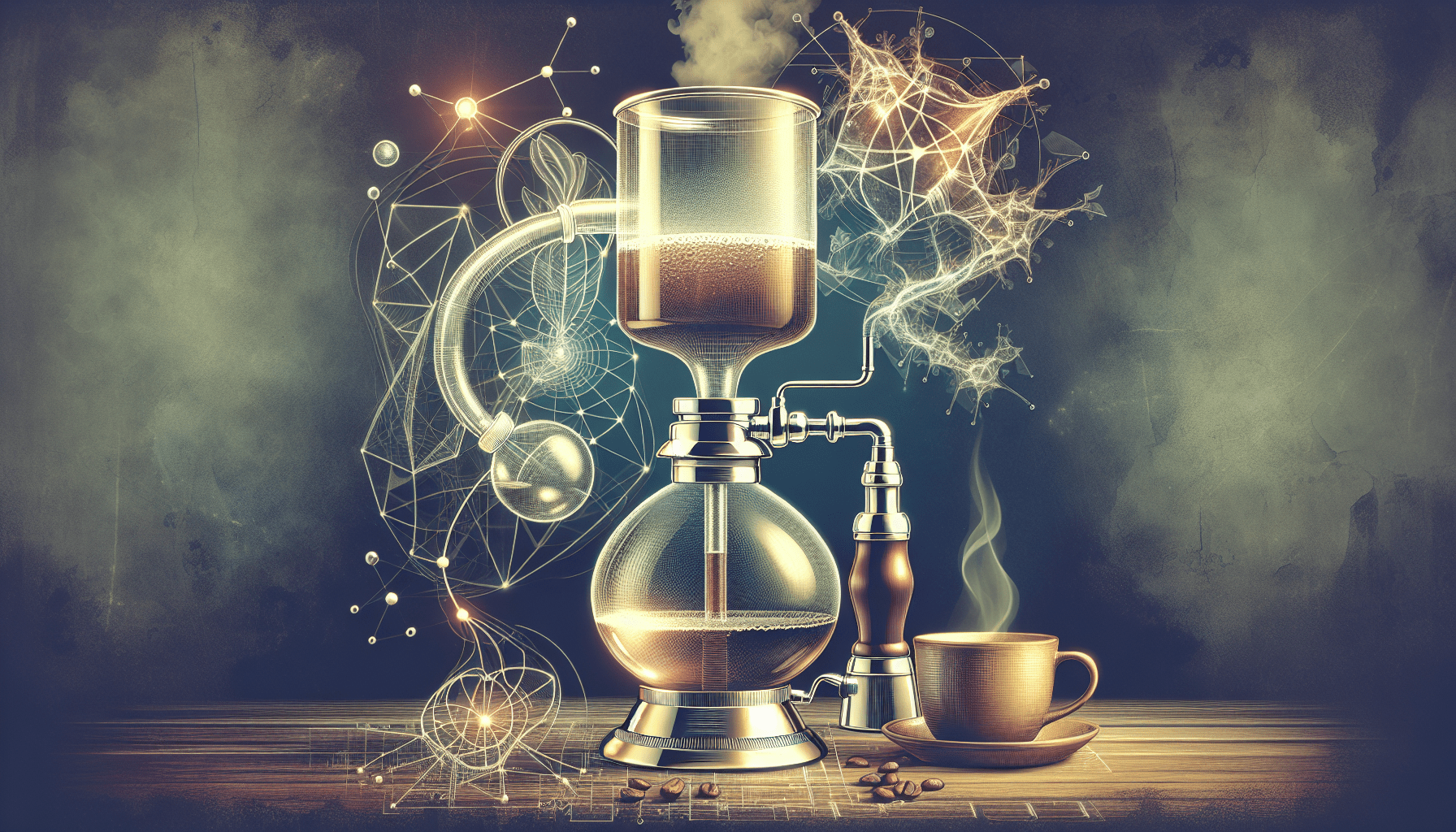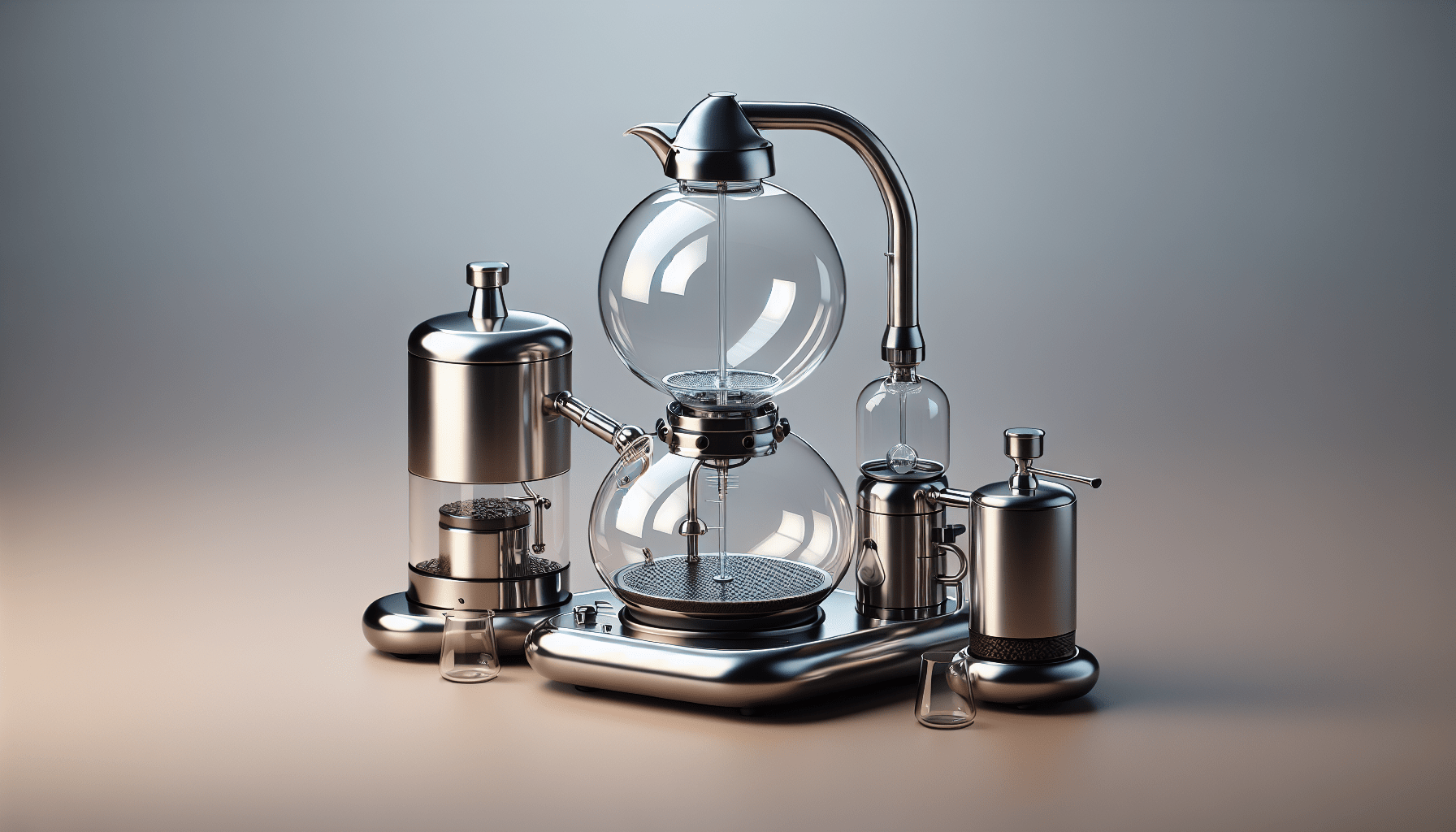If you’re a coffee enthusiast, chances are you’re always on the lookout for new and exciting brewing methods to enhance your morning ritual. Enter the siphon coffee maker, a unique contraption that promises a delicious cup of joe with a touch of theatrical flair. But with its intricate design and use of heat sources, you might wonder – are there any safety concerns to be aware of when using this captivating contraption? Let’s explore the potential hazards and how to ensure a worry-free brewing experience.
General Safety Concerns
Risk of burns
When using a siphon coffee maker, there is a risk of burns due to the hot glass components. The glass chambers and tubes can become extremely hot during the brewing process, so it’s important to exercise caution when handling them. Always use oven mitts or other heat-resistant gloves when touching the hot glass to prevent burns.
Risk of breakage
Another safety concern with siphon coffee makers is the risk of breakage. The glass components can be fragile and may break if mishandled or dropped. To minimize the risk of breakage, handle the parts with care and avoid placing unnecessary pressure on the glass. It’s also advisable to store the coffee maker in a safe location where it is less likely to be accidentally knocked over or hit.
Risk of fire
Siphon coffee makers typically use an open flame or a heat source like a burner to heat the water. This introduces a potential risk of fire if the flame or heat source is not properly managed. Always ensure that the flame or burner is away from flammable materials and keep a fire extinguisher nearby as a precautionary measure. It’s important to never leave the coffee maker unattended while it is in use.
Risk of electrical shock
If you are using an electric siphon coffee maker, there is a risk of electrical shock if not handled correctly. Ensure that the coffee maker is properly grounded and follow the manufacturer’s instructions for safe operation. It’s important to never touch the electrical components with wet hands and always unplug the coffee maker before cleaning or performing any maintenance.
Handling and Usage
Proper handling of hot glass
To safely handle the hot glass components of a siphon coffee maker, it is recommended to use heat-resistant gloves or oven mitts. These protective items will help shield your hands from the heat and reduce the risk of burns. When disassembling or assembling the coffee maker, allow the glass parts to cool down first before touching them directly.
Avoiding sudden temperature changes
Sudden temperature changes can cause the glass components of a siphon coffee maker to crack or break. To prevent this, avoid exposing the hot glass to cold water or vice versa. Allow the parts to cool naturally before rinsing them with lukewarm water. It’s also important to avoid placing hot glass directly on a cold surface, as this can lead to thermal shock and breakage.
Using the correct type of fuel or heat source
When using a siphon coffee maker that requires a heat source, it’s essential to use the correct type of fuel or heat source recommended by the manufacturer. Improper fuels or heat sources can result in a fire hazard or damage to the coffee maker. Always follow the instructions provided by the manufacturer to ensure safe and proper usage.
Regular maintenance and cleaning
Regular maintenance and cleaning of a siphon coffee maker are crucial for both safety and optimal performance. Clean the components thoroughly after each use, ensuring that there is no residual fuel or heat source left behind. Additionally, it is recommended to descale the coffee maker regularly to remove any mineral deposits that may affect its functionality. Proper storage and care, such as keeping the coffee maker in a dry and safe location, will also contribute to its longevity and safety.
Cleaning and Maintenance
Risk of scalding during cleaning
When cleaning a siphon coffee maker, there is a risk of scalding due to the hot water and steam that may be present. To avoid scalds, always allow the coffee maker to cool down completely before starting the cleaning process. Be cautious when emptying the hot water and disposing of used coffee grounds, as they can cause burns if they come into contact with your skin.
Removing residual fuel or heat sources
To ensure safety during cleaning, it’s important to completely remove any residual fuel or heat sources from the siphon coffee maker. This may involve emptying the alcohol burner or ensuring that any gas valves are turned off. By removing these potential sources of ignition, you reduce the risk of fire or other accidents while cleaning the coffee maker.
Regular descaling and cleaning of components
Regular descaling and cleaning of the siphon coffee maker’s components are essential for maintaining both its safety and performance. Over time, mineral deposits and residue from coffee oils can build up and affect the functionality of the coffee maker. Follow the manufacturer’s instructions for descaling and cleaning, and make it a routine practice to keep your siphon coffee maker in optimal condition.
Proper storage and care
When not in use, it’s important to store the siphon coffee maker in a safe and dry location to prevent accidents or damage. Avoid placing it near edges or in areas where it could be knocked over or exposed to excessive moisture. Taking proper care of the coffee maker, such as handling it gently and avoiding rough movements, will help prolong its lifespan and ensure its safe usage.
Potential Health Concerns
Chemicals and materials used in construction
The materials used in the construction of siphon coffee makers can raise concerns regarding potential chemical exposure. Some coffee makers may contain plastics, rubber parts, or other materials that may come into contact with the brewed coffee. To minimize any potential health risks, it’s recommended to choose a siphon coffee maker that meets food-grade standards and is free from harmful chemicals like BPA.
Coffee grounds exposure
Coffee grounds, especially when handled improperly during brewing or cleaning, can potentially cause skin irritation or allergic reactions. To avoid any potential health concerns, it’s advisable to handle coffee grounds with caution, using proper protection like gloves when necessary. Always wash your hands thoroughly after handling coffee grounds to prevent any potential irritation or allergic reactions.
Allergies and sensitivities
Individuals with specific allergies or sensitivities to certain materials or coffee additives should exercise caution when using a siphon coffee maker. Pay attention to the ingredients of the coffee beans or additives used in the brewing process and ensure they are compatible with your specific dietary restrictions or sensitivities. If you have any concerns or known allergies, consult with a healthcare professional before using a siphon coffee maker.
Maintenance of filter components
Some siphon coffee makers include filters or filter components that need regular maintenance. It’s important to keep these components clean and replace them at the recommended intervals to ensure the best brewing results and to prevent potential health issues. Follow the manufacturer’s instructions for cleaning and replacing the filters to maintain the cleanliness and integrity of the brewed coffee.
Manufacturing Standards and Certification
Ensuring compliance with safety regulations
When purchasing a siphon coffee maker, it is important to ensure that it complies with safety regulations set by relevant authorities. Look for certifications or indications that the coffee maker meets safety standards specific to your country or region. This will give you confidence in the product’s quality and safety, knowing that it has undergone rigorous testing and meets the necessary requirements.
Looking for relevant certifications or approvals
In addition to general safety regulations, certain certifications or approvals can provide further assurance of a siphon coffee maker’s safety and quality. Look for certifications like UL (Underwriters Laboratories) or NSF (National Sanitation Foundation) as they indicate that the product has been tested and evaluated for safety and performance. Researching the significance of these certifications can help you make an informed decision when choosing a siphon coffee maker.
Researching manufacturer reputation
Before purchasing a siphon coffee maker, it’s a good idea to research the reputation of the manufacturer. Look for reviews, customer feedback, and any relevant safety or quality concerns that have been raised. A manufacturer with a positive reputation for producing safe and high-quality products is more likely to prioritize safety in their manufacturing processes. This additional research will enable you to make an informed decision and select a siphon coffee maker from a trusted and reputable manufacturer.




